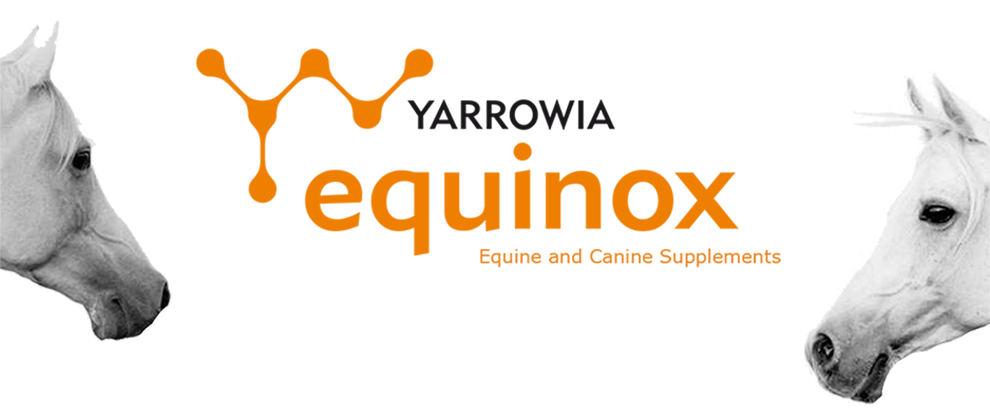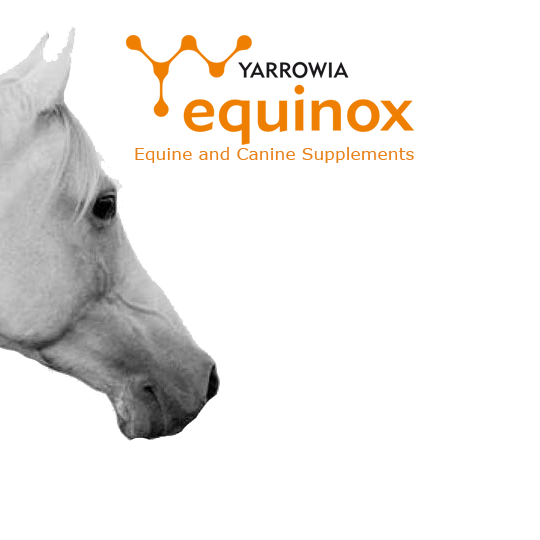
Equinox supplements for Horses & Dogs

Equinox supplements for Horses & Dogs

Equinox Horses & Dogs
Yarrowia lipolytica yeast contains:-
a full scope of exogenous amino acids, exceeding the standard,
bioactive selenium in valuable organic complexes with sulphuric amino acids: selenomethionine and selenocysteine,
all necessary microelements, with particularly high content of zinc, manganese and cobalt,
macroelements that regulate the electrolyte balance: calcium, sodium, potassium, chlorides,
unsaturated fatty acids, including linoleic acid with its valuable omega-6 bonds,
vitamin B complex,
bioactive substances: cytrulline maleate, alpha ketoglutarate and kynurenic acid.

Yarrowia lipolytica are dimorphic yeast forming cream-coloured. They occur naturally in margarine, cereal plants, high-protein meat products, vegetables, frozen food and wine.
They belong to non-pathogenic microorganisms, and processes it participates in have the status of "Generally Recognised as Safe” (GRAS). Contrary to Saccharomyces cerevisiae yeast processing simple sugars, the strain uses fats (vegetable fatty acids, including unsaturated acids) as a source of carbon and energy.
An exceptionally favourable biomass production capacity was achieved, along with a significant tolerance to unfavourable culture conditions, including increasing osmotic pressure and relatively low pH of the medium. As a result, biomass with a very high nutritional value was obtained.
Due to its unique physiological and biochemical properties the strain offers a huge biotechnological potential.
It is characterised by a high protein content between 40 and 47%, high dry mass content (95%) and low raw ash content (max 10%). Protein from that yeast is particularly valuable, because of high content of lysine. It is also characterised by good absorbability. Also the high phenylalanine, valine, tryptophan and isoleucin content is notable. Moreover, protein from Yarrowia lipolytica yeast has a high biological value of 80 %.
Use in Nutrition
Lipid profile of Yarrowia lipolytica involves a presence of unsaturated fatty acids constituting as much as 91.79%, including 57.68 % monounsaturated fatty acids, and 34.11% polyunsaturated fatty acids. Fat from Yarrowia lipolytica yeast contains approx. 28% of linoleic acid, and the content of a-linolenic acid belonging to the omega-3 group in those yeast is approx. 10 % of total fatty acid content. Unsaturated fatty acids are more easily digested compared to saturated ones. That is a result of ability of those acids to form micelles, making them easily absorbed in the alimentary tract.

Vitamins from the group B proved necessary in healthy breeding of young animals. Yarrowia lipolytica yeast are particularly rich in those vitamins. They contain vitamins B1, B2, biotin, folic acid, nicotinic acid, choline, niacin. In case of feed mixes the vitamin content is assumed as zero, and recommended amounts are added in form of ready-made feed premixes or as a water supplement. Addition of Yarrowia lipolytica feed yeast allows cost reduction, and additionally guarantees high activity level of supplied vitamins, and thus their high availability and absorption in animal organism.
Yarrowia lipolytica yeast plays the role of a perfect prebiotic due to the high cellular wall content of glucane and mannane, resulting in affinity to specific bacterial adhesins. Yarrowia lipolytica yeast contains oligosaccharides (mannanes, beta-glucans) which are not susceptible to animal digestive enzymes, so are able to survive the passage to equine intestines. The yeast then becomes a medium for normal bacterial flora, leading to restricted growth of negative bacteria present in intestinal flora. Favourable bacteria, including lactic bacteria proliferate rapidly and negative organisms decrease.
Yeast cellular walls have a stable and extensive structure, and possess bacteria- and mycotoxin-binding properties. Pathogens and toxins bind to specifically on the yeast cell wall and are eliminated from the intestine with stool, or become eliminated by microbial population of the large intestine. Yarrowia lipolytica is particularly helpful in diet, when animals have to deal with challenges associated with weaning, stress, digestive issues, and low feed consumption.
Yarrowia lipolytica may also stimulate the organism's immunological system. That effect is associated with presence of glucans in their cellular wall. Those compounds stimulate the reticuloendothelial system. Yeast beat-glucan is a modulator of organism's immunological response: both cellular and humoral.